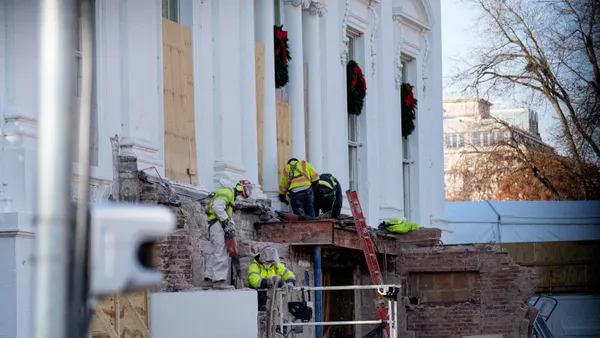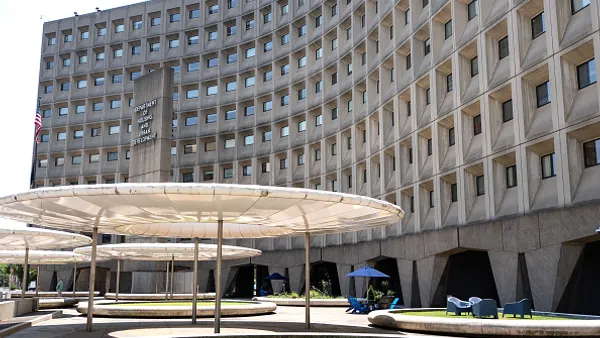Dive Brief:
- New York City’s first micro-unit development, Carmel Place, will begin leasing its 55 units today, which range in size from 260 to 360 square feet, The New York Times reported.
- Fourteen units are designated as affordable and will rent for $950 a month, less than half the price of the market rate units. Almost 60,000 people applied for those affordable units — or 4,300 per unit. Applicants entered a lottery for the cheaper apartments, and the winners will be revealed in January, a month before the building is expected to open.
- The studios, prefabricated in Brooklyn and assembled on site, include kitchenettes, with mini-refrigerators, stovetops and microwaves, and a bathroom large enough for a wheelchair, The Times reported. Additional features include nine-foot ceilings and sliding glass doors leading to balconies. Some market-rate units, ranging from $2,540-$2,910, will come furnished with items particularly suited to micro-living, such as a desk that residents can extend into a 10-person dining table.
Dive Insight:
The popularity of micro-apartment developments is growing, particularly in high-rent areas like Hawaii and Portland, OR. Even cities like Grand Rapids, MI, are using micro-apartments as a solution for affordable housing for people who make too much money to qualify for subsidized rent but not enough to afford a new, market-rate apartment.
New York, almost synonymous with high rents, is always in desperate need for affordable housing, as evidenced by the number of applications for the Carmel Place lottery.
"It shows the need that people feel for affordable, private space in the city," Tobias Oriwol, told The Times. Oriwol is a project developer for Monadnock Development, the developer, along with the Lower East Side People’s Mutual Housing Association, for Carmel Place. In fact, the Times reported, the concept for the micro-unit development came about after a design competition engineered to address how to build safe and reasonably priced apartments for single New Yorkers who don’t want roommates.
This makes sense, according to The Times, as only 60% of households in the city are families, yet studios make up only 7% of housing inventory. This gap results in unsafe living situations, as New York singles crowd into apartments, often violating housing and fire codes.
"There is this idea that bigger is better, and that we need housing for families," Sarah Watson, deputy director of the Citizens Housing and Planning Council told The Times. "But people change, lifestyle changes, technology changes and the housing needs to change."
New York City typically prohibits development of apartments smaller than 400 square feet, but the city granted Carmel Place and exception. Currently, there is a proposal in front of the Department of City Planning that would get rid of that minimum square footage requirement and permit more micro-units. However, "even if these changes prevail, a building consisting entirely of micro units would still be illegal," according to The Times. "For the foreseeable future, Carmel Place will remain an outlier and something of a social experiment."
The use of modular, prefabricated units assembled on site, or "offsite" construction, is also gathering steam. Millennium Hotels is building an "M Social" luxury hotel in California with units prefabricated in Poland. Additionally, according to a 2014 survey conducted by the NIBS Offsite Construction Council, the construction industry has seen increasing demand for offsite methods, especially in the hospitality, student housing and military sectors.












